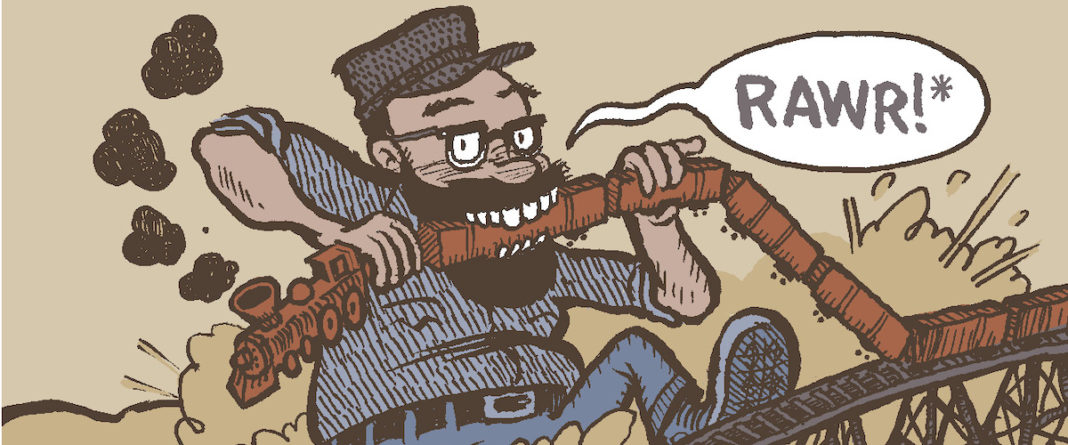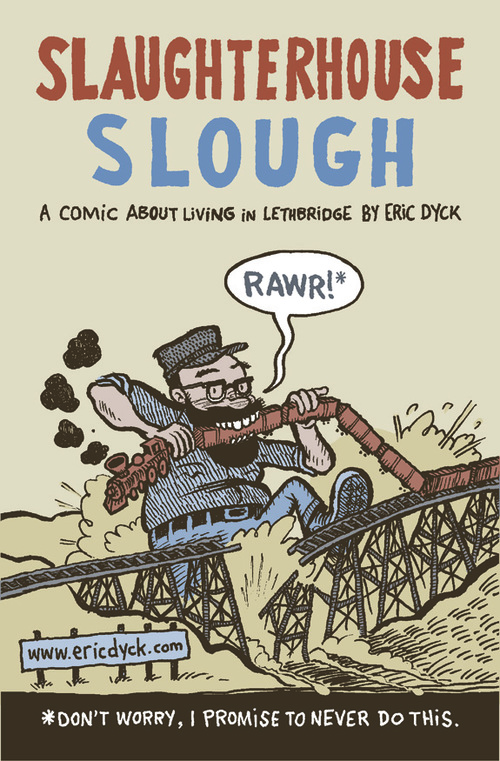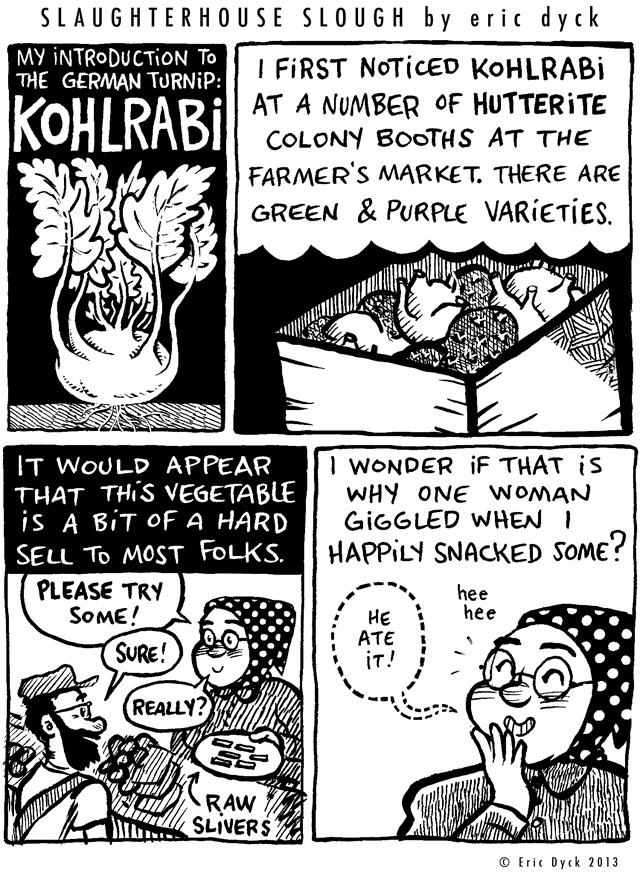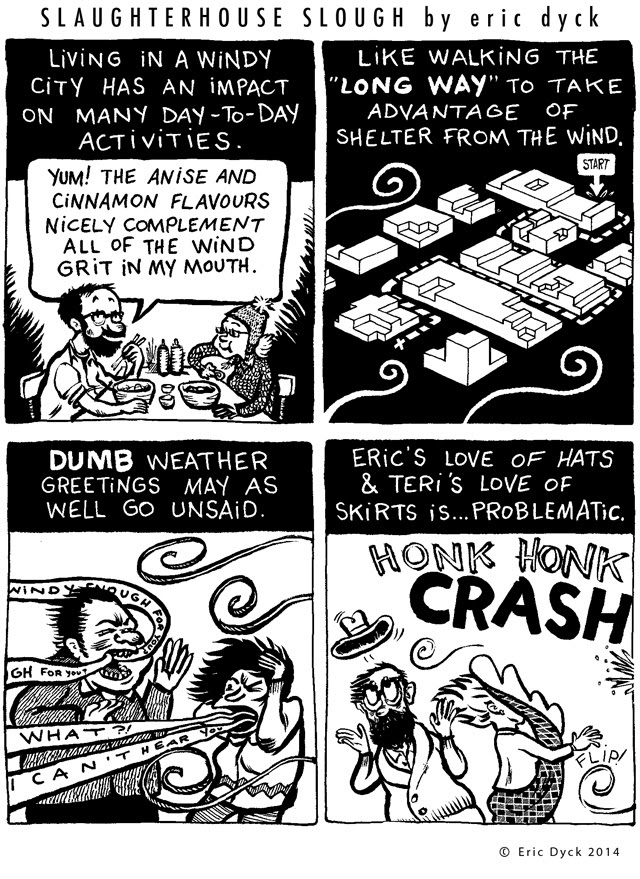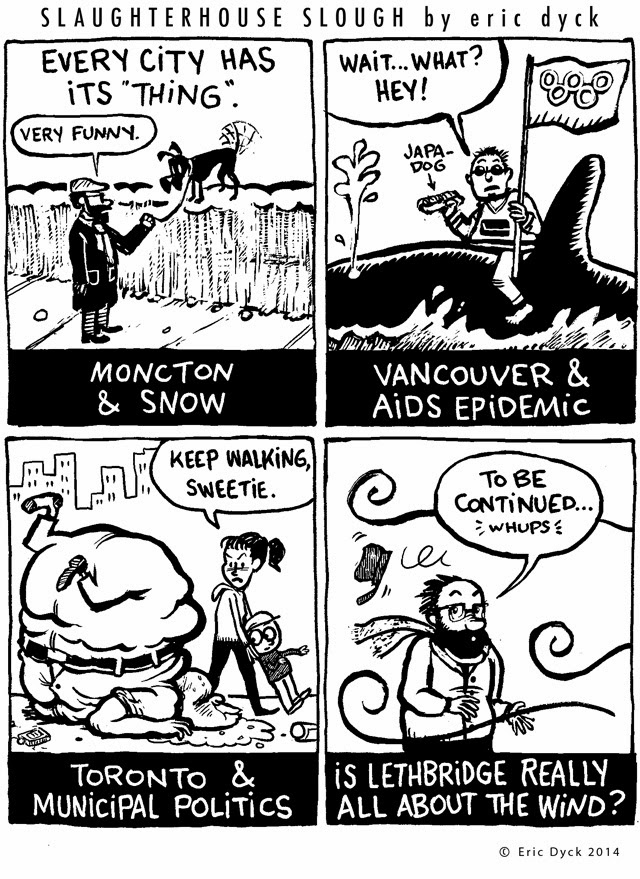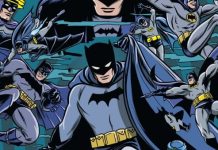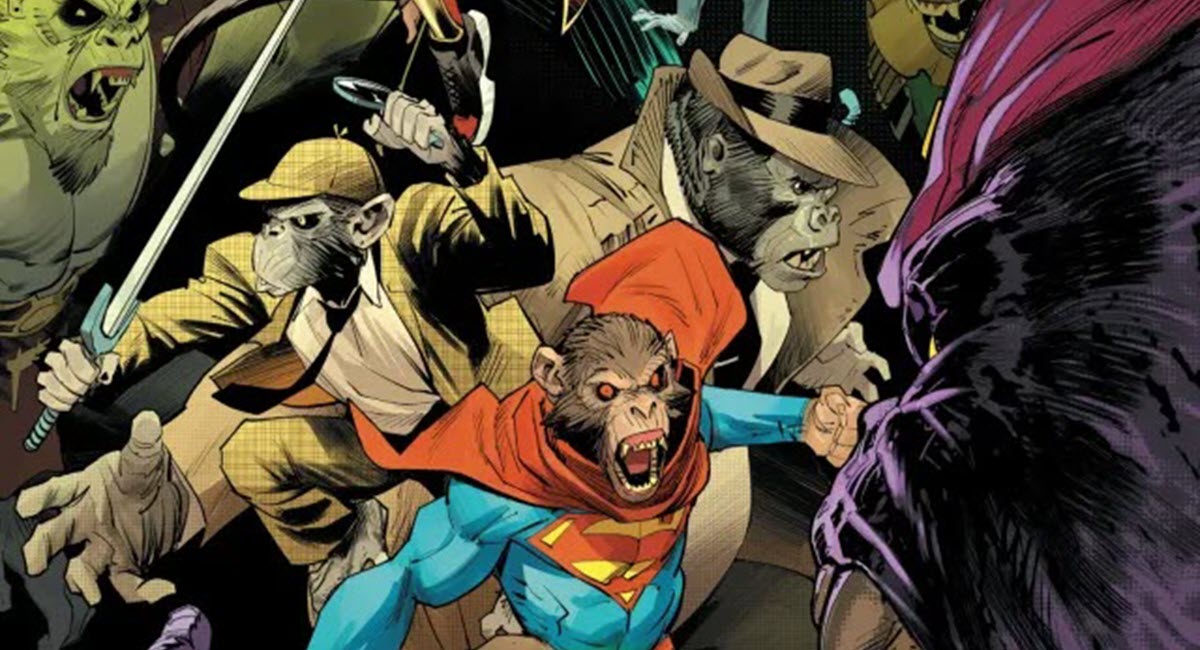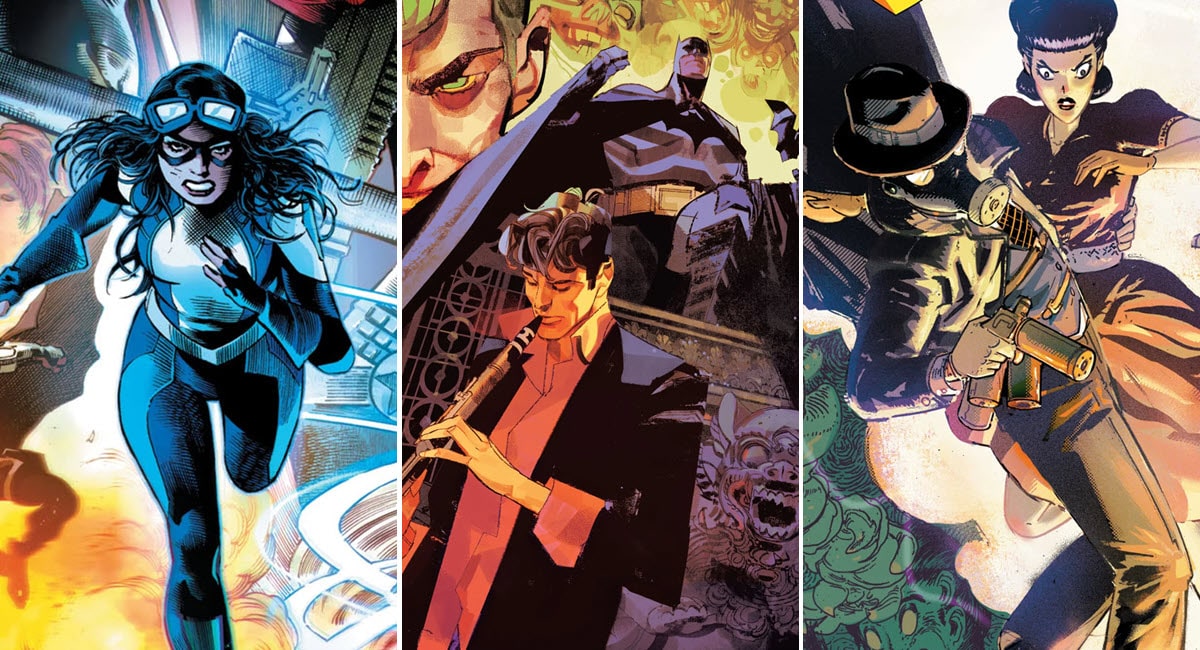I’ve had the pleasure to visit a few towns in Alberta for work recently and I tried to find comics from local artists everywhere I went. This is the second in a series looking at a comic from an Albertan cartoonist. In this final installment, I’m taking a look at a comic taking place in Lethbridge, Alberta called Slaughterhouse Slough by Eric Dyck.
Eric Dyck’s Slaughterhouse Slough is an odd comic. It’s a continuation of Dyck’s long-running series Mon Qui Town, in which he explores the quirks and oddities of Moncton in New Brunswick. Slaughterhouse Slough is about Lethbridge, Alberta, but it’s fundamentally about learning. It’s about discovering new things about the town you live in, new facts about history, new people in the street, or new revelations about oneself.
Curiosity seems to be the driving factor for Dyck’s comics, his quest for discovery an ongoing process of personal development. Take for instance one of the early comics from the series in which he discovers kohlrabi, a kind of German turnip that resembles a light greenish bulb with various branches coming from random sides. It’s an odd-looking vegetable and something that’s not particularly popular (or easily found) in Canada. Dyck describes his first encounter with kohlrabi and focuses on a few observations in his comic: the bizarre look of the kohlrabi and the happiness of the vendor who convinced him to try it, celebrating that someone was courageous enough to eat it. It encapsulates this drive for discovery that makes Slaughterhouse Slough so endearing.
The format remains simple throughout the series. It’s usually single page, four-panel, black and white comics that focus on a specific element. The Lethbridge viaduct, the differences between the vegetables available at farmer’s market, strange experiences or even the way people interact on the street are fodder for exploration. Dyck’s style is perfect for the material: his lines are bold, expressions are often exaggerated and the cross hatching gives some depth to the illustrations. The format works very well and seems to allow Dyck to focus on the content of the comics.
There are some frustrating aspects to the series I’d be remiss if I didn’t mention. Sometimes, it seems to fluctuate between simple observations and actual insights on what Dyck is observing. In that Kohlrabi comic, for example, he stops short of providing more than a general look at what happened when he first saw the vegetable. In most cases, this approach works well, as it pertains to the process of discovery itself, but some of his comics would benefit from a more complete approach than a simple observation. Readers might find that some of his comics are lacking in wisdom.
However, the perceptiveness and clever attention to the novelty of everyday life manages to be interesting in its own right. An example in which his insights comes to elevate the comics is in the example below, in which Dyck describes the challenges of living in a city as windy as Lethbridge. It affects the roads you’re taking (so you can use buildings as way to evade wind tunnels) and even the clothes you wear (hats and skirts are not recommended). It’s insightful: the specificity of the weather has modified his and his partner’s behaviour. It’s an incredible observation on something that affects Lethbridge citizens in a small, very concrete way.
I was quite taken with the way Dyck describes Lethbridge. It’s an interesting town I didn’t know much about before visiting it. Exploring this comic made me discover some aspects of Lethbridge I would have never even considered. Eric Dyck has made a nice series about people and about how continuous learning and self-reflection is important to better understand the world around us.
Slaughterhouse Slough
Eric Dyck
Self-published, 2018
$10 CAD (Print)
Buy HERE


